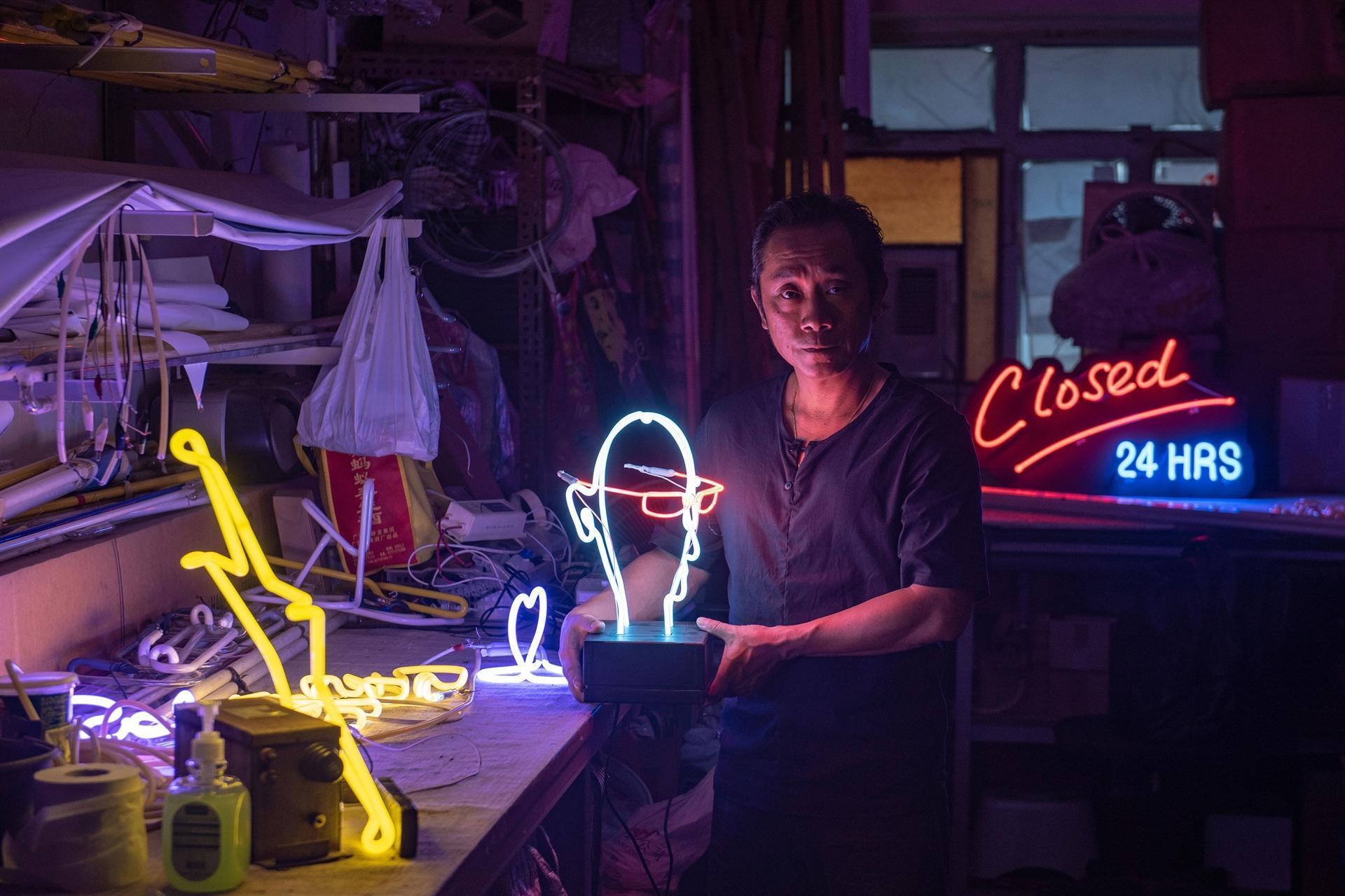The disappearing jobs of yesterday
PARIS

Inserting a blank sheet into her Remington Sperry, Candelaria Pinilla de Gomez starts typing. One of Bogota's street clerks, she has spent the last 40 years typing up countless thousands of documents.
Aged 63, she is the only woman among the street clerks who have set up their tiny tables on the pavement outside a modern office block in Bogota.
Wearing suits but no ties, the writers work in the open air, under a parasol, seated on a plastic chair with the typewriter on their knees. Once upon a time, these clerks played an essential role with public deeds, tax documents and contracts all passing through their hands.
Cesar Diaz, now 68, prides himself on being the pioneer of a trade which has ended up becoming a "refuge" for pensioners looking to top up their monthly allowances.
They work from Monday to Friday and earn less than $280 which is the minimum wage. Until now, they have managed to survive pretty much everything except perhaps the advent of the internet.
"These days, a mother will ask her son to download a form, fill it in and send it by internet," admits Pinilla de Gomez. "That really screws things up for us."
Delia Veloz's hands have almost lost their fingerprints from the constant rhythmic motion of rubbing dirty clothes against rough stones at an old public laundry in Quito
With a mop of curly grey curls, this 74-year-old is one of the few people left in Ecuador who still practices the ancient and demanding work of a washerwoman, a trade which is increasingly rare due to the widespread use of domestic washing machines.
For more than five decades she has been working at the Ermita, a public laundry in the colonial center of Quito with her rectangular stone, tank of water and various wires for hanging things out to dry.
For every 12 articles of clothing, she earns $1.50 from her increasingly few customers, mostly those who don't have a washing machine or who prefer things to be washed by hand. On a good day, she can make between $3 and $6.
The lack of running water in Kenya's poorest neighborhoods have for the last 18 years, meant a living for Samson Muli, a water seller in Nairobi's Kibera slum.
Dressed in a dun dustcoat Muli uses a hose to fill his array of cylindrical 20-litre jerry cans with water from three freestanding 10,000-litre tanks. He loads 15 at a time onto a trolley, and hauls them off to his clients.
The margins are tiny, Muli buys water at five shillings ($0.05) a can and sells for 15,- but it can add up to 1,000 shillings a day, enough to make a difference.
Mohammad Maqbool Ansari puffs and sweats as he pulls his rickshaw through Kolkata's teeming streets, a veteran of a grueling trade long outlawed in most parts of the world and slowly fading from India too.
Kolkata is one of the last places on earth where pulled rickshaws still feature in daily life, but Ansari is among a dying breed still eking a living from this back-breaking labor.
The 62-year-old has been pulling rickshaws for nearly four decades, hauling cargo and passengers by hand in drenching monsoon rains and stifling heat that envelops India's heaving eastern metropolis.
Their numbers are declining as pulled rickshaws are relegated to history, usurped by tuk tuks, Kolkata's famous yellow taxis and modern conveniences like Uber.
"When it's hot, for a trip that costs 50 rupees ($0.75) I'll ask for an extra 10 rupees. Some will give, some don't," he says.
Neon sign maker Wu Chi-kai is one of the last remaining craftsmen of his kind in Hong Kong, a city where darkness never really falls thanks to the 24-hour glow of myriad lights.
Chi-kai works without a safety visor and has been scalded and cut by glass which sometimes cracks and explodes.
Chi-kai became one of only around 30 masters of the craft in Hong Kong, even in neon's heyday.
Although demand is now significantly lower than at neon's peak in the 1980s, he says, there has been renewed interest and nostalgia for its gentler glow, immortalized in the atmospheric movies of award-winning Hong Kong director Wong Kar-wai. Some of Chi-kai's clients are now requesting pieces for indoor decoration.
"I've been working with neon lights all my life. I can't think of anything else I'd be better suited for," he says.
With an ancient 50-year-old Olympus camera and an enlarger that he bought in 1980, Venezuelan photographer Rodrigo Benavides works his "magic" inside a tiny improvised darkroom at home.
Although working with equipment and techniques that have virtually disappeared, he carries on as if digital photography doesn't exist. Using his bathroom as a makeshift lab, he develops negatives, turning them into black and white prints.
"I have always tried to be economical with my resources, always have done, always will do," he says, extolling the wonders of his Olympus 35 SP which uses a reel of film, doesn't need batteries and is completely manual.
















